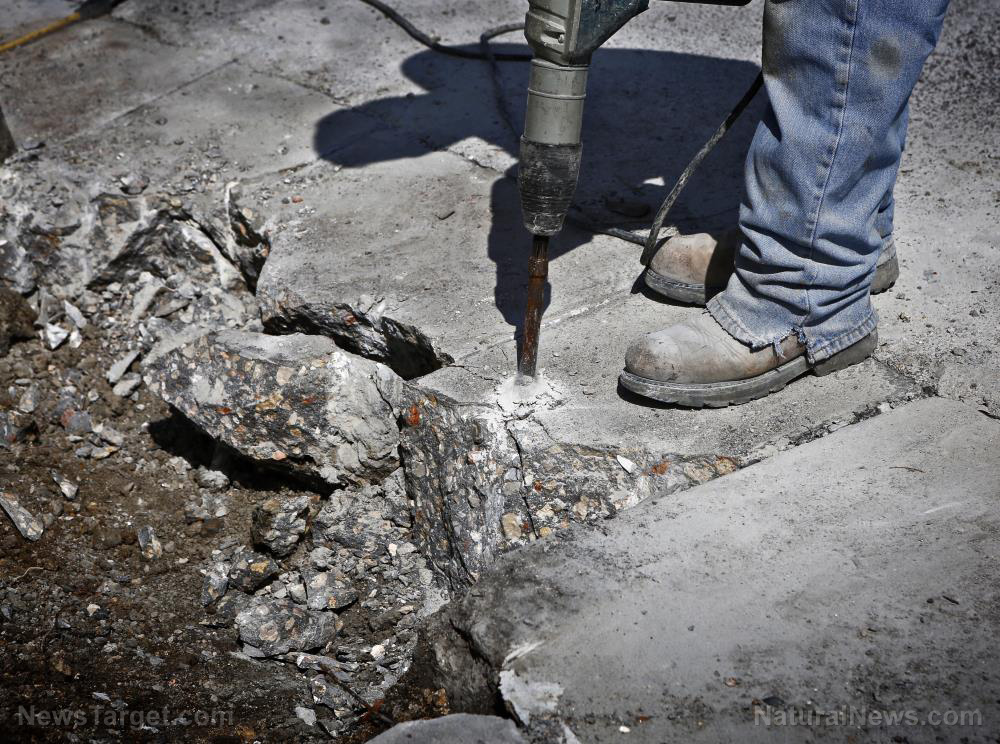
Residents of an apartment building in Tel Aviv first noticed that the ground was emitting steam on New Year's eve. Authorities then inspected the site and told residents to evacuate. The area had since been declared safe but residents refused to go back home as authorities still haven't identified the source of the problem.
Ground's geyser-like activity baffles experts
Around two weeks ago, a resident reported to the apartment owners’ committee that the concrete surface outside was heating up. Modi Feldberg, the committee head of one of the buildings, went to investigate and said that he "almost got burned" after stepping on the concrete. Feldberg said that steam was also coming out of the concrete in adjacent buildings.
“I was afraid there was a power line in the area, and I asked a laborer to dig into the ground with a shovel. All of a sudden, steam came out. I imagined that it was probably a geyser," said Feldberg. He noted, however, that there had never been any problems with the electricity in the building.
Authorities later fenced off the area and told the residents of two apartment buildings to evacuate. The Geological Survey of Israel confirmed that the ground was heating up after drilling holes in the area, finding that the steam was water-based and was as hot as 140 degrees.

An official investigating the scene surmised that an electrical problem over a period of several days might have been the source of the heat. But the Israel Electric Corporation denied that there was a connection between the heat and the power grid. Experts also concluded that the buildings were up to code and found no dangerous substances that might have interacted with the groundwater.
With the case still unresolved, the municipal government decided to have the holes filled in. Officials said, however, that they will continue to monitor the temperature of the ground and keep performing tests to pinpoint the heat source. (Related: 4.9 Magnitude earthquake in Algeria collapses houses and leaves huge cracks on the ground.)
The residents had also been permitted to return to their homes since Saturday, though many of them were still reluctant to occupy the area. Natan Drori, who lives in one of the evacuated buildings, said that the residents do not plan to return until there's a detailed report about the source of the problem.
"They evacuated us because they were worried about our safety, and now they’re calling on us to return without providing any kind of convincing explanation. How can you be so sure there’s no danger to the residents?" Drori said.
Sinkholes in Israel appear without warning
The mysterious event at Tel Aviv caused concerns because sinkholes have appeared without warning along the Israeli side of the Dead Sea. According to a report by Live Science, these sinkholes have opened up because the Dead Sea has been receding.
As the hypersaline water retreats, fresh groundwater wells up and dissolves layers of salt, forming large underground cavities that give way to sinkholes.
Hanan Ginat, a geologist at the Dead Sea and Arava Science Center in Israel, said that most of the sinkholes on the Dead Sea appear along the Israeli side, with more than 5,000 sinkholes on that region alone. Ginat also said that sinkholes are difficult to predict, saying: "We're looking for systems to forecast where they will happen, but it's very complicated."
Besides its extreme salinity, the Dead Sea is known for having the lowest elevation on Earth. And for the past few decades, it continues to shrink due to the diversion of water from the Jordan River (which feeds the Dead Sea) and mineral mining down south.
Read more articles about natural catastrophes like sinkholes at Disaster.news.
Sources include:
Please contact us for more information.






















